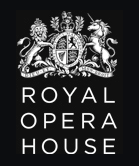In the last two years Twitter has widely grown in popularity. Even though it has been labeled a fad like other social networking sites (Facebook, MySpace, Bebo, etc.), it continues to flourish and establish itself as one of the most effective and versatile social media channels.
Twitter can be used as a tool for staying in touch with friends and family, as a real-time search engine, as an information outlet and in many other ways. Over here we use it for networking with dance fans, companies, writers, dancers and choreographers anywhere around the globe. We have been positively surprised with the amount of information we can exchange and use for spreading, together with other ballet fans, the notion that “Ballet Rocks!”.
We are enthusiastic about the use of social media to promote inclusion and attract new audiences to certain art forms. It is an effective way to get a message across and we certainly approve of art organisations jumping onto the bandwagon. But many of these organisations have been too hasty in embracing social media and have no clear strategy, goals or any understanding of how to leverage off these channels. We have often seen new Twitter users quickly become wall spammers (ie. overpromoting their services with little additional information or dialogue with followers) or adopt erratic tweeting behaviour (ie. short bursts of activity followed by prolonged silence).
But aren’t we all on Twitter to promote a service anyway? Most Twitter sceptics view it as a self-promotion wasteland, but given that it has little or no impact on box office sales why do companies even bother maintaining a Twitter presence? And how can they improve their Twitter strategy, toning down on spamming and overpromotion? These are the questions we attempt to answer below:
How can dance companies use Twitter
-
As a promotional tool: It can be used for announcements, providing related links, to launch competitions, promotions and engage audiences.
-
As a networking resource: to seek solutions and get real-time feedback. Direct questions/polls can be used to profile audiences without the need to chase after statistical studies or feedback forms. Any Twitter user can also get live information and find what audiences are talking about via Twitter Search + relevant keywords.
- To engage/maintain a dialogue with followers: to learn about audience demographics and understand which areas need to be developed/focused on.
-
As a live feed/relaying events, helping international followers feel included in an event (@RoyalOperaHouse did a great job with their BP summer screenings and their Twitter Opera project). A core network of followers (ie. a community of supporters) can also help spread the company’s news/events via retweeting or RT’ing (ie. forwarding information).
Practical examples:
@DutchNatBallet, @mariinskyen and @nycballet do great links to videos & production photos.
@BRB, @BostonBallet, @MiamiCityBallet, @sfballet link to interesting related blog posts & articles, as well as programme notes, pictures, casting details, etc.
@BRB, @paballet @NBTlive @ScottishBallet and @BalletBlack are examples of companies who often engage, retweet and exchange tweets with their followers. They even post job vacancies from time to time.
How can dancers use Twitter
Dancers lead very busy lives running from class to rehearsal, from rehearsal to performance, so why should they waste what little spare time they have on Twitter?
-
It can help dispel myths regarding their profession and provide a glimpse into their daily activities, without getting too personal (ie. unlike the concept of “Facebook friends”).
-
It can help them build relationships and engage with fans and audiences in general. Interviews and traditional media features might be forgotten or skipped, whereas Twitter is a continuous flow, helping the dancer maintain an internet presence.
- It can help them network with other dancers, choreographers and in the case of freelance performers, dance companies and festivals.
There might be a preconceived notion that Twitter, like Facebook, is “just another place for procrastination”. However, Twitter is the least intrusive of all social media tools: it can be accessed from any mobile phone and it takes less than a minute to compose a 140 character message. Twitter is based on linear messaging (displayed as a timeline) so there is no additional browsing, photo albums to maintain, no Farmville games and such to divert one’s attention.
Examples of dancers who are great on Twitter: @Bennet76, @balletrusse, @MadisonKeesler, @ashleybouder, @daniil, @EvanMcKIE, and @MarijnRademaker, among others.
How NOT to Tweet
- Don’t spam. Followers need to be interested and care about the information they get. Too much, and they will lose interest. Too little and what’s the point? Don’t say it all at once, spread your tweets during the day.
- Don’t be a one-track mind. People will be quick to unfollow if your ticketing or product page is the only thing you tweet. Post articles of interest, blog posts, reviews, polls… the sky is the limit.
- Don’t be self-centered. It is good “Twitter etiquette” to retweet (RT), ie. give credit to whom credit is due. It is all about spreading the word.
- Don’t just talk & talk. Twitter is a social network and as such is built on relationships. One cannot build a relationship if there are no conversations. As you speak, followers listen & if they reply to your tweet or ask a question they want to know you are listening back. Do respond.
Why should companies, dancers, etc., follow others?
There are several Twitter strategies. Over here for instance, we might not follow everyone back but that’s because we try to keep track of those we do follow and their individual posts (It would be impossible to pay attention to everything that’s being said if we reciprocated all the follows). However, if someone we do not follow engages with us or asks us a question we will always engage back. This seems to us a more authentic way to establish a dialogue.
Another strategy is to follow everyone back and use certain filters (via TweetDeck or another third party Twitter application) to keep track of only the tweets that are relevant to you. The disadvantage here is that tweets “slip through the net” and if you are an active user you might be missing out on potentially relevant information.
The punch line: We do not think Twitter is another social media fad. Major companies and individuals have embraced it as a tool which can be used for:
- Promoting events, content, and to spread the news.
- Building a community. Be generous and reciprocate.
- Sharing your thoughts, ideas and links.
- Providing a live summary/description of events or presentations.
- Thanking your audiences.
Further Information on Twitter and how to use it:









 But is it all bad news for the copyright owner? On the flip side, YouTube provides an opportunity for free promotion of the arts. The BBC tolerates private users uploading their copyrighted material onto YouTube simply because they consider this generates more publicity and free marketing for them. The same logic could be applied to ballet and ballet companies. For instance, those who live far from the Royal Ballet or from any other major ballet company might be more likely to purchase a DVD or travel to see signature ballets such as
But is it all bad news for the copyright owner? On the flip side, YouTube provides an opportunity for free promotion of the arts. The BBC tolerates private users uploading their copyrighted material onto YouTube simply because they consider this generates more publicity and free marketing for them. The same logic could be applied to ballet and ballet companies. For instance, those who live far from the Royal Ballet or from any other major ballet company might be more likely to purchase a DVD or travel to see signature ballets such as 













